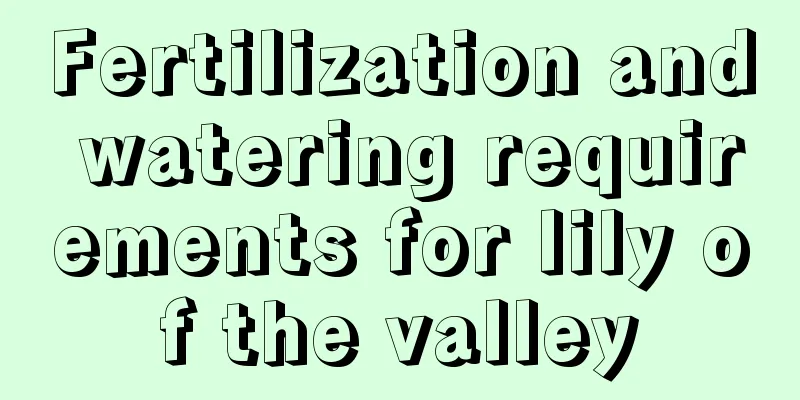When is the best time to transplant peonies?

|
As a beautiful and elegant flower, peony has many friends who love it. There are also many varieties of peonies. Some varieties are not easy to grow and require careful care from flower lovers. Some friends who grow peonies will even go through the process of transplanting. So when is the best time to transplant peonies? When is the best time to transplant peonies? 1. Spring Spring is considered one of the best times to transplant peonies, especially in early spring when the peonies have not yet begun to grow vigorously and the damage to the peony seedlings will be less. The specific transplanting time is generally from the end of March to the beginning of April, when the temperature warms up, it is suitable for transplanting. 2. Autumn Autumn is also a good time to transplant peonies, especially between August and October. The climate and temperature are suitable during this period, and the peony is in the rooting season. After transplanting, it can adapt to the new environment more quickly and resume growth. 3. Precautions for transplanting When choosing the time to transplant, you also need to pay attention to the following points: Avoid transplanting on rainy days as the rain may affect the growth of the peony. After transplanting, the soil quality needs to be ensured to be the same as or better than the original soil to promote the healthy growth of peonies. After transplanting, the peony needs proper fertilization. You can choose organic fertilizer or chemical fertilizer to provide sufficient nutrients. After transplanting, you need to pay attention to moisturizing to prevent the peony from lacking water. You can keep the soil moist by spraying water or covering it with materials. After transplanting, the branches should be pruned in time to promote branching. At the same time, attention should be paid to disease and pest control to ensure the healthy growth of peonies. How to fertilize peonies? Fertilization position: When applying fertilizer, keep a certain distance to avoid direct contact between fertilizer and root system. You can adopt circular fertilization to facilitate uniform absorption by the root system. When to apply fertilizer: When flower buds appear, you can use phosphorus fertilizer, or spray potassium dihydrogen phosphate, which will help the peony flowers become more colorful and prolong the flowering time. However, when the flower color appears, fertilization should be stopped. Summer fertilization: Within half a month after the peony flowers fade, you should apply a compound fertilizer mainly composed of phosphorus fertilizer. You can also apply some decomposed and fermented farmyard manure. Watering after fertilizing: Water the plants in time after fertilizing to help nutrients be absorbed quickly. Avoid over-fertilization: Excessive fertilization may lead to poor plant growth or the occurrence of diseases and insect pests, so be careful to apply fertilizer in moderation. Understand nutrient requirements: Before fertilizing, you need to understand the nutrient requirements of the peony and choose the appropriate fertilizer. Peonies have high demands for nitrogen, phosphorus and potassium. Fertilization of new plants: It is not advisable to apply fertilizer to new plants within six months to avoid fertilizer damage. You can start fertilizing after half a year. Spring Fertilization: Before the flowers bloom in spring, as the temperature rises and new leaves grow, fertilizing can accumulate nutrients for flowering. Fertilization taboos: Peonies are sensitive to fertilizers, and the application of concentrated fertilizers or inadequately fermented organic fertilizers may cause fertilizer damage. Fertilization time: It is best to apply fertilizer in the morning or evening, and avoid applying fertilizer during high temperatures. Liquid fertilizer and foliar fertilizer : In April and May, when the peony is about to enter the flowering period, applying liquid fertilizer or foliar fertilizer rich in phosphorus and potassium will help flowering. Compound fertilizer: In June and July, you can apply some compound fertilizer. To sum up, spring and autumn are both suitable times for transplanting peonies. The specific season to choose can be determined based on local climatic conditions and the growth conditions of the peony.
|
<<: How to manage azalea in winter
>>: Why does azalea drop leaves? How to remedy it
Recommend
When is the best time to prune peonies?
Peony pruning time and season Spring pruning: The...
What are the values and functions of Cycas revoluta
The ornamental value of cycads Cycas is a famous ...
What to do if passion fruit is watered too much
1. Remove from the basin The first thing to do af...
What flowers bloom in autumn?
1. What are the autumn flowers? There are many ki...
Can the golden ball be repotted in summer? Can it survive if repotted in summer?
Can the golden marble be repotted in summer? As l...
What are the legends and meanings of the flower of Aquilegia columbine?
1. Flower language and meaning 1. Victory: Aquile...
Is it poisonous to grow five-petal plum indoors?
1. Is it toxic to keep it indoors? Catharanthus r...
Can pregnant women drink honeysuckle? Can babies drink honeysuckle water?
1. Efficacy and Function Honeysuckle has many fun...
What is a tangerine and how is it different from an orange?
1. What is Tangerine is a common fruit. The fruit...
The 3 most fairy-like succulent plants
Blue Light - Seven Fairies Blu-ray In the past tw...
How to grow sunflowers and when to plant them
1. How to grow sunflowers 1. Suitable soil: Sunfl...
How to care for egg peach succulents? Cultivation methods and precautions for egg peach
The egg peach is a very beautiful succulent plant...
What is the row spacing and plant spacing for soybean planting? What is the best spacing between plants?
Soybean planting spacing When planting soybeans, ...
The difference between heartleaf vine and green radish
1. Color 1. Heartleaf Vine The easiest way to dis...
How to plant lotus seeds
1. Planting method 1. Select suitable ornamental ...









